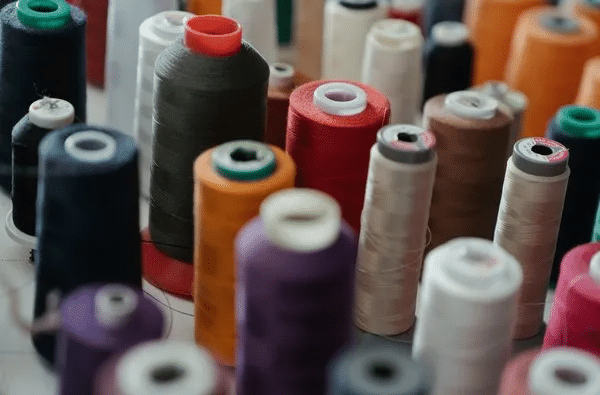According to the definition given by ASTM, sewing thread is a flexible, small diameter yarn or strand usually treated with a surface coating, lubricant or both, intended to be used to stitch one or more pieces of material or an object to a material. It may be defined as smooth, evenly spun, hard-twisted ply yarn, treated by a special finishing process to make it resistant to stresses in its passage through the eye of a needle and through material involved in seaming and stitching operations.
Sewing threads are used in garments, upholstery, air-supported fabric structures and geotextiles to join different components by forming a seam. The primary function of a seam is to provide uniform stress transfer from one piece of fabric to another, thus preserving the overall integrity of the fabric assembly.
Threads for the high temperature applications are required to withstand and hold the seams secure in their position in extreme temperature conditions between 260ºC-1100ºC. Threads are usually made from glass, carbon, polytetrafluoroethylene, steel and aramid fibers. Polyesters, Polypropylene, Nylon 6, Nylon 66, are widely used for low temperature applications such as car upholstery, leather industry, packing like cement and fertilizer bags. Medical sutures are used for wound closure and are specially design and sterilized to fulfill the end applications.
Seam can be formed by the following techniques:
- Mechanical: stapling, sewing.
- Physical: welding or heat-setting.
- Chemical: by means of resins.
The formation of seams by physical and chemical methods is restricted to a few specialized applications, as these processes tend to alter certain properties of the textile material. Among mechanical sewing techniques, sewing maintains its prevailing position by virtue of its simplicity, sophisticated and economical production methods and the controllable elasticity of the seam produced.
Essential Properties Required for Sewing Threads:
Industrial sewing techniques make specific and often very exacting demands on the threads involved in the sewing process. The sewability of sewing threads is of major importance, having a very profound effect on seam quality and production costs. The sewing and the seam performance of a sewing thread are largely influenced by the material to be sewn, the sewing technique and the end-use for which the sewn material is intended.




